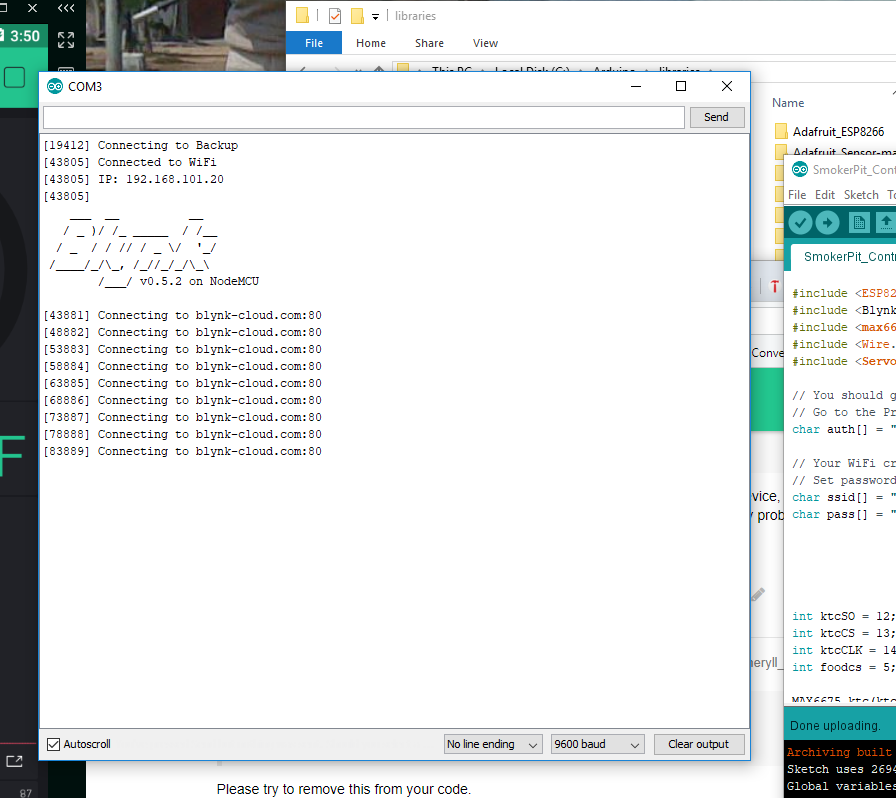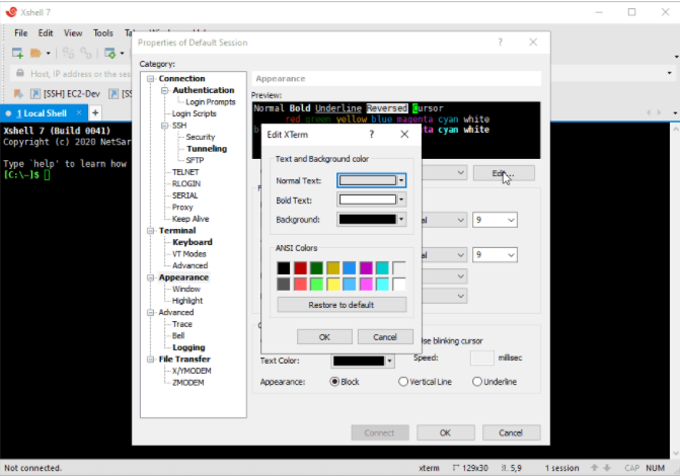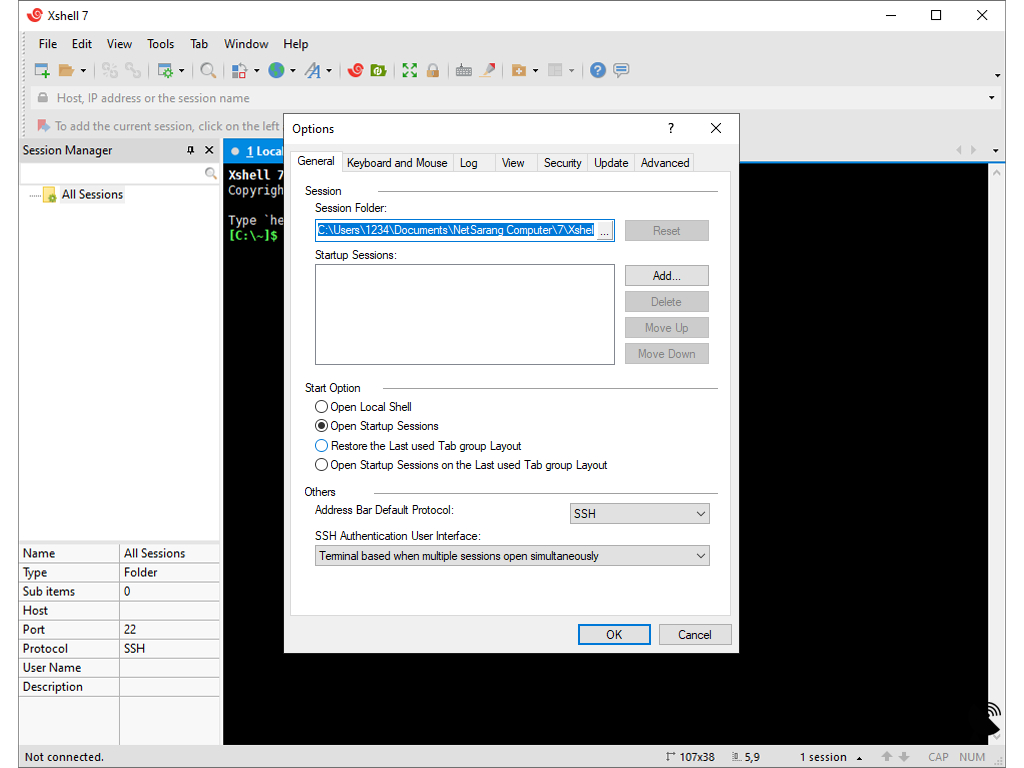Think about all the clever gadgets in your home or perhaps at your workplace that connect to the internet. We're talking about things like smart speakers, security cameras, or even industrial sensors way out in the field. Keeping tabs on these little helpers, especially when you're not right there next to them, is a pretty big deal. Getting into these devices from a distance, you know, to check on them or make a quick change, needs to be as straightforward as it is safe.
The world is filled with billions of these internet-connected items, from the thermostat that learns your habits to machines that keep an eye on important data in faraway places. Making sure you can reach them, and that no one else can sneak in, is very important. It's like having a special key that only works for you, letting you peek inside or give instructions, no matter where you happen to be at the moment.
This is where a clever tool called Secure Shell, or SSH, steps in. It's a way to create a private, coded pathway straight to your internet-connected device. This means you can give commands, move files around, or even set up automatic tasks on your smart gadgets, all from the comfort of your own laptop or even your phone. It truly offers a way to manage things from afar, giving you a lot of freedom, too it's almost like magic.
Table of Contents
- What is SSH and How Does it Help with IoT Device Access?
- Why is Secure SSH Access for IoT Devices So Important?
- Getting Started with SSH Access for Your IoT Devices
- Overcoming Challenges with IoT Device Access Behind Firewalls
- Practical Uses for SSH Access on Your IoT Devices
- Keeping Your IoT Devices Safe with Smart SSH Access
What is SSH and How Does it Help with IoT Device Access?
At its core, SSH, which stands for Secure Shell, is a kind of special language computers use to talk to each other over a network, like the internet. What makes it special is that it does this in a very safe manner. Think of it like sending a secret message in a sealed envelope that only the intended recipient can open. This way of communicating means that any information you send, or receive, is kept private from prying eyes. It's a fundamental piece of how we can reach devices far away and be sure our instructions are heard correctly and securely. That, is that, a pretty neat trick for your IoT devices.
So, how does this help with your smart gadgets? Well, imagine you have a small computer, say a Raspberry Pi, sitting in your garage, helping to monitor the temperature or control a light. If something goes wrong, or you just want to check its status, you don't want to have to walk all the way out there every time. This is where SSH becomes incredibly useful. It gives you a direct line to that device, letting you see what's happening, change settings, or even fix problems, all from wherever you are. It's about giving you complete command and making troubleshooting a much simpler affair, pretty much from anywhere you can connect.
Using SSH, you can do all sorts of things with your internet-connected devices. You might want to run a specific command, like telling a sensor to take a reading. Or perhaps you need to send a new program file to your smart home hub. You can even set up tasks to happen automatically, saving you time and effort. All of this can be done from your regular computer or even your phone, which is very convenient. It's a way, in some respects, to have a deep connection with your devices without needing to be physically present, making remote management a breeze.
- Sam Champion Married
- Sasha Pieterse
- Sex Ai Chat
- Sefan Ru
- Securely Connect Remoteiot Vpc Raspberry Pi Download Free
Why is Secure SSH Access for IoT Devices So Important?
In a world where everything from your coffee maker to factory machinery is getting connected to the internet, having a way to keep these connections safe is more important than ever. These internet-connected items, or IoT devices, are everywhere. They are gathering information, doing jobs, and sometimes even controlling things that matter a lot. If someone with bad intentions could get into one of these devices, there could be real problems, you know? They might steal information, mess with how something works, or even use your device for their own purposes, which is why secure SSH access for IoT devices is so vital.
Think about a smart thermostat in your home. If you could troubleshoot it or check its settings from work, that's incredibly handy. But what if that connection wasn't safe? What if someone could listen in or even take control? That's a scary thought. The same goes for sensors placed in remote areas, maybe checking the water level in a distant reservoir. Sending someone out there every time something needs a look or a fix can be expensive and take a lot of time. SSH helps here by providing a very safe way to do these checks from afar, saving you effort and money, too it's almost like having eyes and hands everywhere.
This need for safety isn't just about privacy; it's about making sure your devices keep working the way they should. Secure SSH access means that the instructions you send to your IoT devices are truly private and can't be changed by anyone else along the way. It means the data your devices send back to you is also protected. This kind of protection helps keep everything running smoothly and prevents unwanted interference. So, when we talk about keeping things safe, it's about peace of mind and making sure your internet-connected gadgets are doing their job for you, and nobody else, apparently.
Getting Started with SSH Access for Your IoT Devices
Getting your IoT devices ready for remote control through SSH involves a few simple steps. It's about preparing your computer or phone and also setting up the device itself so they can talk to each other safely. The good news is that for many common setups, like using a Windows computer or an Android phone, the process is pretty straightforward. You'll generally need to get some specific software, make a few adjustments to your device's settings, and then create that secure link. It's not as hard as it might sound, actually, and opens up a lot of possibilities for managing your gadgets.
For instance, if you want to control a small computer like a Raspberry Pi, which is a very popular IoT device, SSH is one of the simplest ways to give it remote access. You essentially create a secure pathway over the internet, allowing you to interact with it as if you were sitting right in front of it. This skill, being able to access your IoT devices using SSH, is really quite important for anyone who looks after connected equipment in today's interconnected environment. It helps make sure both the device works well and that it stays safe from unwanted attention, you know, which is a big plus.
The ability to securely reach and manage your IoT devices from your personal computer or a mobile phone truly opens up a lot of new ways to do things. You can set up tasks to happen on their own, keep a close watch on how things are running, and have direct command over your smart gadgets. It's a way to be more efficient and responsive, giving you more flexibility in how you use your connected world. So, getting comfortable with SSH for your IoT devices is a smart move, basically, for anyone who wants to make the most of their smart home or smart business setup.
Setting up SSH Access on Windows 10
If you're using a Windows 10 computer, getting set up to use SSH for your IoT devices is a pretty manageable process. We can guide you through the steps to make sure you can reach your smart gadgets from your desktop. This usually means installing some needed programs on your Windows machine, making sure your IoT device is ready to accept these connections, and then, of course, making that first secure link. It’s a bit like getting two friends who speak different languages to understand each other; you need the right tools and a little bit of setup for them to communicate effectively. It's honestly not too complicated once you know the way.
The first step often involves checking if your Windows 10 system already has the necessary SSH tools. Sometimes they are already there, just waiting to be used. If not, adding them is usually a quick download and installation. Once your computer is ready, you'll need to prepare your IoT device. This might involve turning on SSH in its settings, or perhaps setting up a special user account for remote access. These steps are important for security, making sure only authorized people can get in. Then, with both sides prepared, you can try to establish that first secure connection, which is really the exciting part, you know, when it all comes together.
Having the ability to SSH into your IoT devices from a Windows 10 computer means you have a powerful tool at your fingertips. You can send commands, transfer files, and manage your devices without ever leaving your desk. This is especially helpful if you have many devices or if they are in places that are hard to get to. It saves time and effort, making your life a little bit easier when it comes to managing your smart environment. It's a very practical skill to have, and once you've done it a few times, it becomes second nature, apparently.
Remote SSH Access for Android IoT Devices
Did you know you can also use your Android phone or tablet to get into your IoT devices using SSH? It’s true! This opens up a whole new set of possibilities for keeping an eye on and managing your smart gadgets while you're out and about. We can show you how to securely control and watch over your devices right from your Android device, often for free. This guide will take a deeper look into how you can use web SSH, or specific apps, to connect to your devices, giving you freedom to manage them from almost anywhere. It’s pretty convenient, actually, for when you're not near your computer.
Connecting to your IoT devices from your Android phone involves a process called SSH tunneling. This creates a special, coded connection directly between your Android device and your IoT gadget. It's like building a secret, protected pathway for your information to travel, even if the regular network you're using isn't very safe. This means you can send data back and forth, like commands or readings, without worrying about someone else seeing it. Imagine being able to control your smart home lights or check a sensor's status directly from your phone while you're at the store. It's a kind of freedom that makes managing your connected life much simpler, you know, on the go.
This ability to securely reach and manage your IoT devices from your Android device really does open up a whole lot of new options. You can set up automatic tasks, keep a close watch on how things are working, and have direct command over your smart gadgets, all from the palm of your hand. This article will help you learn how to get your Android devices set up for SSH, so you can manage your IoT world with ease. It's a very practical way to stay connected and in command, offering a lot of flexibility, basically, for your daily life.
Overcoming Challenges with IoT Device Access Behind Firewalls
One common way to keep IoT devices safe is by putting them behind a firewall. Think of a firewall as a strong guard that only lets certain kinds of traffic in and out, keeping unwanted visitors away. This is great for security, but it can make it tricky when you need to access and manage devices that are deployed in faraway spots, especially if those firewalls block everything trying to come in. It's a bit like having a very secure house, but then realizing you can't easily get your mail delivered because the gate is always locked. This challenge can mean sending technicians out to the physical location to connect to those devices, which, you know, adds a lot of difficulty and can cost a good bit of money.
When devices are tucked away behind these protective barriers, reaching them remotely becomes a puzzle. If all incoming connections are blocked, your usual SSH attempts might just bounce off. This is where creative solutions come into play. Instead of trying to punch a hole through the firewall from the outside, some clever systems work by having the IoT device itself reach out from the inside. This is a common pattern for secure remote access, and it helps get around those tough network restrictions. It means you can still get that vital connection without compromising the device's safety. It's a rather smart way to deal with a common hurdle.
This kind of remote access is especially helpful for large groups of devices, like a fleet of sensors spread across a big area, or smart equipment in many different buildings. Without a good remote access solution, every time a device needed attention, you'd have to send someone there, which, as a matter of fact, can be a real drain on resources. But with the right tools, you can manage, control, and keep an eye on all your Linux machines or IoT devices from anywhere in the world, making things much more efficient. It really helps simplify the whole process of keeping your connected world running smoothly.
How Does SSH Help with IoT Device Access Through Firewalls?
So, how does SSH manage to help you get to your IoT devices when they are hiding behind a firewall that blocks everything coming in? Well, a platform like SocketXP IoT, for example, offers a clever way around this. It provides remote SSH access to your IoT devices even if they are behind a NAT router or a firewall, by using special secure tunnels over the internet. These are called SSL/TLS VPN tunnels, and they create a very private and protected pathway for your connection. It's a bit like having a secret, one-way door that only your device can open from the inside, letting you connect securely. This is how you can still have that important SSH access for your IoT devices without opening up your network to risks, which is very important.
The way this works is that a part of the system, often called a device proxy, acts like a client. It starts a connection from the IoT device itself, reaching out to an SSH daemon. Think of the SSH daemon as the part of the IoT device that listens for SSH connections. Both the proxy applications then create a tunnel, which is like a private tube, for the information to travel between your local computer and the IoT hub's streaming point. This setup means that the connection is started from the inside out, which often gets around those strict firewall rules that block incoming traffic. It's a truly smart approach to remote access, allowing you to manage your devices with ease, basically, even in tricky network setups.
This method is a powerful solution for gaining secure and flexible remote access to any Linux machines or IoT devices. With such a system, you can manage, control, and monitor your entire collection of Linux machines or IoT devices from anywhere in the world. It means you don't have to send technicians out to remote sites just to connect to a device for troubleshooting. This greatly reduces the difficulty and the cost of managing your devices. It's a way to keep your operations running smoothly and efficiently, even when your devices are in hard-to-reach places, you know, making things much simpler.
Practical Uses for SSH Access on Your IoT Devices
Once you
Related Resources:



Detail Author:
- Name : Fanny Koch
- Username : gboyer
- Email : murazik.gunner@hotmail.com
- Birthdate : 1972-08-30
- Address : 7355 Waelchi Junction Lake Cortney, IA 34367
- Phone : +1 (430) 936-9450
- Company : Reichel-Macejkovic
- Job : Pressure Vessel Inspector
- Bio : Ab excepturi modi eveniet. Maiores aliquid in deserunt aut. Voluptate molestiae vel ab ad omnis consectetur. At quisquam nostrum consequatur.
Socials
instagram:
- url : https://instagram.com/beier1970
- username : beier1970
- bio : Architecto aut provident iste quas. Magnam dolor reprehenderit ipsa quidem quia omnis.
- followers : 2549
- following : 361
tiktok:
- url : https://tiktok.com/@gregory_id
- username : gregory_id
- bio : Non aut qui qui sint modi.
- followers : 4388
- following : 786
linkedin:
- url : https://linkedin.com/in/gregorybeier
- username : gregorybeier
- bio : Hic beatae eligendi fugiat dolorem.
- followers : 634
- following : 1822
twitter:
- url : https://twitter.com/gregory_beier
- username : gregory_beier
- bio : Ea harum veniam mollitia sit ducimus dolores ut. Quos labore tempora eligendi explicabo pariatur. Placeat doloremque mollitia voluptas.
- followers : 5337
- following : 1545
facebook:
- url : https://facebook.com/gregory8373
- username : gregory8373
- bio : Voluptatem distinctio minima quia nobis.
- followers : 646
- following : 136